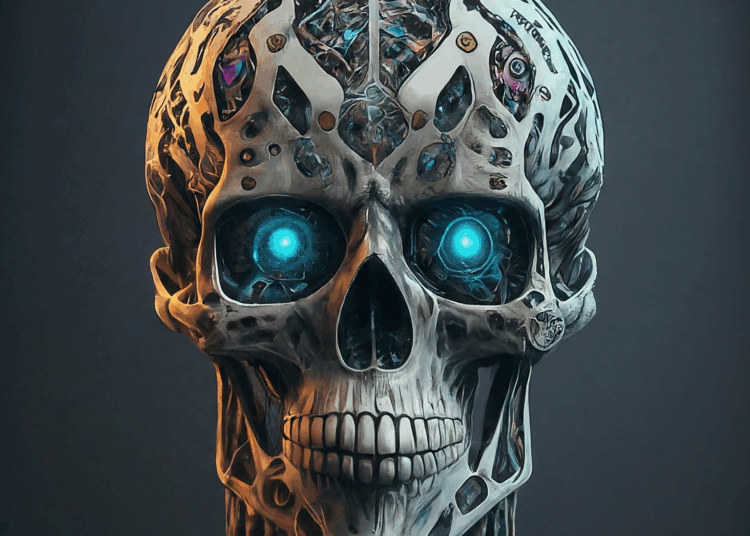### Beyond the Parrot: Are LLMs Thinking or Just Mimicking?
Large Language Models (LLMs) like GPT-4 and Claude 3 have crossed a remarkable threshold. They can compose sonnets in the style of Shakespeare, debug complex Python code, and even engage in nuanced philosophical debates. This explosion in capability has reignited a fundamental question that sits at the heart of artificial intelligence: Are these systems actually *thinking*, or are they just performing an incredibly sophisticated act of mimicry?
To answer this, we must look beyond the conversational interface and into the architectural core. The current generation of LLMs is built upon a foundation known as the Transformer architecture. Its key innovation is the **attention mechanism**, a design that allows the model to weigh the importance of different words in an input sequence. When processing the sentence “The robot picked up the heavy ball because it was strong,” the attention mechanism helps the model correctly associate “it” with “the robot,” not “the ball.” By performing this contextual analysis billions of times across terabytes of text data, the model builds a complex, high-dimensional map of language—a statistical representation of how words, concepts, and ideas relate to one another.
This leads us directly to the central debate currently shaping the field: are LLMs **Stochastic Parrots** or are they demonstrating **Emergent Abilities**?
#### The Case for the Stochastic Parrot
The “Stochastic Parrot” argument, eloquently articulated by researchers like Timnit Gebru and Emily Bender, posits that LLMs are fundamentally pattern-matching systems. From this perspective, an LLM doesn’t *understand* the concept of love; it has simply analyzed countless texts where the word “love” appears and can therefore generate a statistically probable sequence of words in response to a query about it. It is, in essence, “stitching together” plausible-sounding text based on patterns it observed during training. The model isn’t reasoning, it’s retrieving and recombining. The apparent understanding is an illusion, a reflection of the human intelligence embedded in its vast training data.
#### The Counterargument: Emergent Abilities
On the other side of the debate is the concept of “emergent abilities.” This view holds that once a model reaches a certain scale—with hundreds of billions of parameters and trained on trillions of words—it begins to exhibit capabilities that it was never explicitly trained for. For example, models trained purely on text prediction have demonstrated rudimentary “theory of mind” (understanding another’s mental state) and impressive multi-step reasoning.
Proponents argue that these are not just parlor tricks. They suggest that in the process of learning to predict the next word in a sequence with near-perfect accuracy, the model has been forced to create internal representations of the world that are functionally similar to understanding. To perfectly predict text about physics, it might need to build a rudimentary model of physical laws. To perfectly predict a dialogue, it might need to model human motivations. These abilities aren’t programmed in; they *emerge* from the complexity of the system.
### Conclusion: From Mimicry to Meaning
So, can an LLM think? The honest answer is that we don’t have a consensus, partly because we are still struggling to define “thinking” itself. The truth likely lies in a messy middle ground. Current LLMs are not conscious, sentient beings. They do not have beliefs, desires, or subjective experiences. Their “understanding” is not homologous to human cognition.
However, dismissing them as mere parrots feels increasingly inadequate. The emergent abilities we are witnessing suggest that at a sufficient scale, quantitative gains in predictive power are leading to qualitative shifts in capability. These systems are developing abstract representations that allow for novel problem-solving and generalization.
We are moving from a world where we programmed machines to a world where we grow them with data. While today’s LLMs may not be “thinking” in the human sense, they are a powerful new kind of intelligence. They represent a critical step on the path toward Artificial General Intelligence (AGI), forcing us to confront the nature of intelligence itself. The question is no longer *if* we will build more powerful models, but *what* we will discover about cognition—and ourselves—when we do.
This post is based on the original article at https://techcrunch.com/2025/09/18/building-the-future-of-open-ai-with-thomas-wolf-at-techcrunch-disrupt-2025/.






















